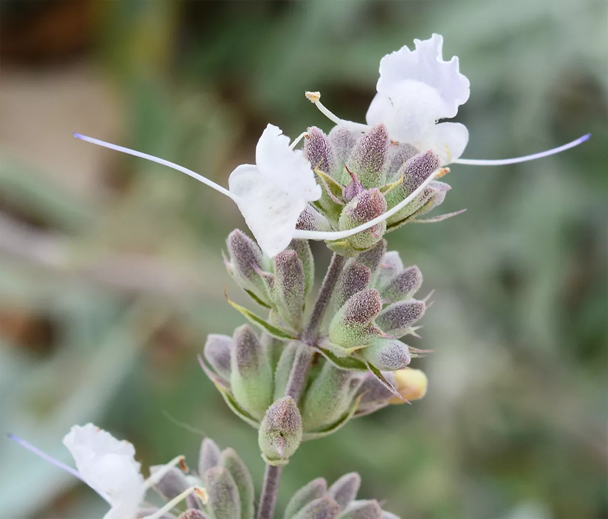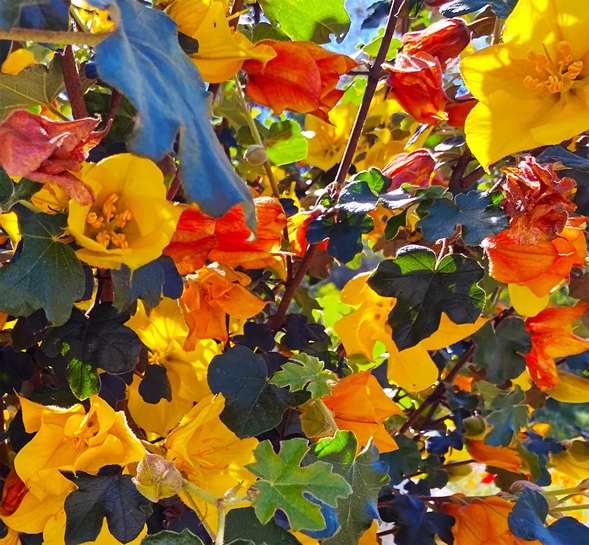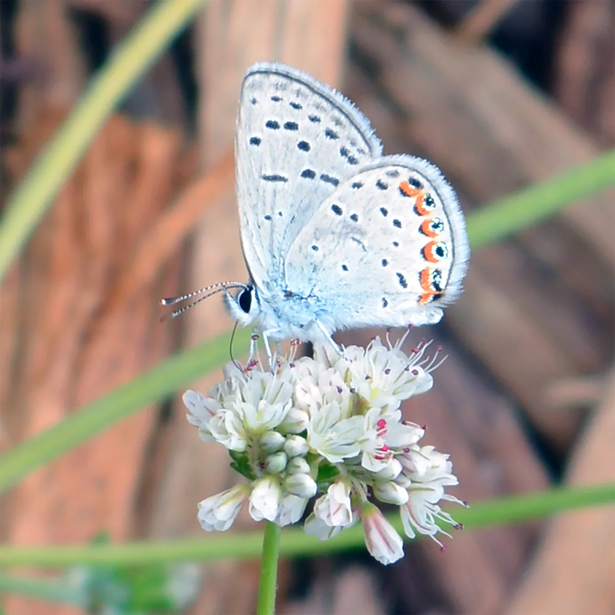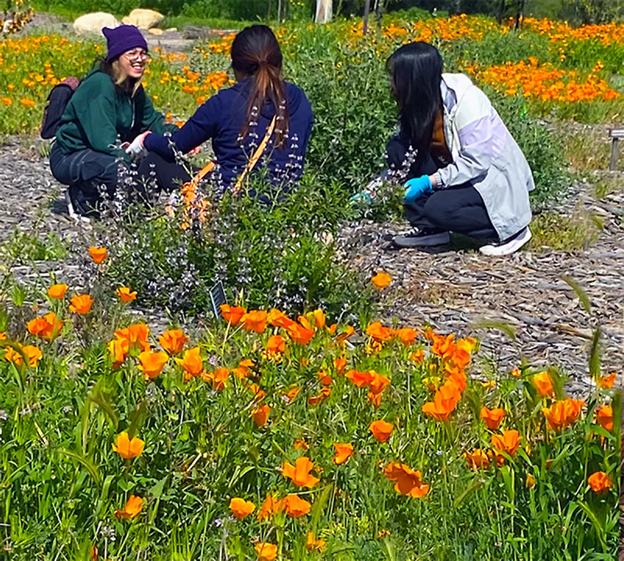Former landfill now bounded by a waterwise demonstration garden

Aromatic white sage, which can be seen in the demonstration garden, produces small flowers in great number and is a favorite of native carpenter bees and bumblebees.(Wes Janssen)
Paradise Hills group converts land loop into native-plant showcase
BY WES JANSSEN
(This article originally appeared in the June 10, 2023 edition of the San Diego Union-Tribune)
Loss of wild habitat drives climate change and degrades biodiversity. Gardeners, landowners and informed volunteers have important opportunities to be an antidote. This is the story of one such opportunity in a San Diego bedroom community.
First, a little backstory:
The relatively small mid-1960s landfill that is now part of Paradise Hills Community Park was the site of attempts to create turf grass recreational fields as recently as the early 1980s. Irrigation created ponding problems.
The growth of consumerism and its discarded waste are an inheritance from the Second Industrial Revolution, the world of the boomer generation’s grandparents, and the Third Industrial Revolution, the world in which America’s baby boomers grew from youth into middle age. Science-based law has only recently caught up with our trash. The Solid Waste Disposal Act of 1965 was aspirational, and waste-treatment law didn’t involve action until October 1976. That action? The U.S. Congress encouraged states to develop comprehensive plans for waste treatment. More aspiration.

Fremontodendron, also known as flannelbush, is a showstopper native to much of California, including San Diego.(Wes Janssen)
In 1984, the U.S. Environmental Protection Agency was granted powers to establish regulatory guidelines and best practices for waste sites. Irrigation systems were no longer used as treatment elements for covered landfill surfaces.
The EPA today primarily endorses revegetation of covered landfills with plants native to the area and, by extension, native to the area’s climate. Native plant species adapted to our climatic conditions may thrive without supplemental irrigation systems. In addition, native plants support native bees, butterflies and birds.
With much of this knowledge in hand, in 2017, Paradise Hills community residents proposed the creation of a native-plant demonstration garden around the perimeter of the old Paradise landfill. The garden would feature native plants that could quickly be established through hand watering, and that would flourish without a proscribed irrigation system. The City of San Diego Parks and Recreation Department cautiously expressed interest in the idea but said the city did not have budgeted resources available to create and maintain the proposed garden. Within specified parameters, the city could “greenlight” the project, but the funding and labor would have to come from another source. The site’s topography and hydrology could not be significantly altered, and all digging would involve monitoring for landfill gas (LFG). Happily, extensive monitoring found no LFG, and none has been detected by Environmental Services monitoring in recent years. With the parameters specified, the challenge of funding remained.
In 2019, the individuals who had presented the proposal to the city formed a nonprofit group, Paradise Gardeners, a California Garden Clubs Inc. member group, and began to fund the project, Paradise Hills Native Garden, primarily by seeking grants. By this time, several of these individuals had graduated from the University of California Cooperative Extension’s Master Gardener Program, and some of the funding came from the Master Gardener Association of San Diego County.

Acmon blue butterflies are drawn to long-flowering California buckwheat.(Wes Janssen)
The garden’s initial “shovel to soil” happened in September of 2020, when Engelmann oaks were planted in the site’s parking area. Today, the xeric demonstration garden encompasses roughly 2 acres, nearly surrounding the covered landfill. The garden includes hundreds of native plants as well as interpretive signage, added paths for walking or running, boulders and benches. Climate-ready plants have been selected for their ability to thrive on winter rains and long, dry summers. To varying degrees, many of these perennial native plants experience dormancies through dry periods; others are evergreen.
The demonstration garden is composed of constituent garden areas, a pollinator garden, a rustic Western garden that includes a stand of young coast live oaks outside the old landfill perimeter, and an ethnobotany garden that educates visitors on the ways the area’s first peoples, the Kumeyaay, used native flora for food, medicines, tools, fuel, materials and cultural activities.
People visiting the garden for the first time should walk the entire loop through the constituent gardens, as they have slightly different themes and may be in varying degrees of seasonal vigor. Walking through the entire garden is a ¼- or ⅓-mile loop, dependent on which pathways are taken.
This winter’s parades of atmospheric rivers flooded the pollinator and butterfly gardens — in one 38-hour span, the site received nearly 5 inches of rain — damaging pathways and killing many natives that cannot endure “wet feet.” Mitigation has involved improved surface drainage and planting strategies in affected areas. The Western garden and most of the ethnobotany areas handled the deluges well, with minimal damage. These parts of the garden have been showcases for spring flowers: poppy, lupine, sage, giant coreopsis, flannelbush, ceanothus and opuntia.

Paradise Hills community volunteers, including high school students, help maintain the plants in the garden created by the nonprofit group Paradise Gardeners. Volunteers are invited to help during scheduled workdays or to visit to learn more about waterwise gardening.(Wes Janssen)
The center area of the former landfill currently remains unimproved, but there are ongoing discussions about potential usages that would not involve irrigation. There are also discussions about developing a loop trail of slightly more than 1 mile in the canyon preserve abutting the native garden to the west.
Paradise Hills Native Garden is now a Master Gardener Demonstration Garden, and Paradise Gardeners invites allied groups and interested community members to volunteer during scheduled workdays, or to walk the gardens and learn more about waterwise, native-habitat gardening. Immediately adjacent to the south fork of Paradise Creek, the garden is an eBird Hotspot and a Monarch Waystation. It is located at 6800 Potomac St.
Janssen is a UCCE Master Gardener, an advocate for expanding urban forests and for including native plants in home landscapes.

